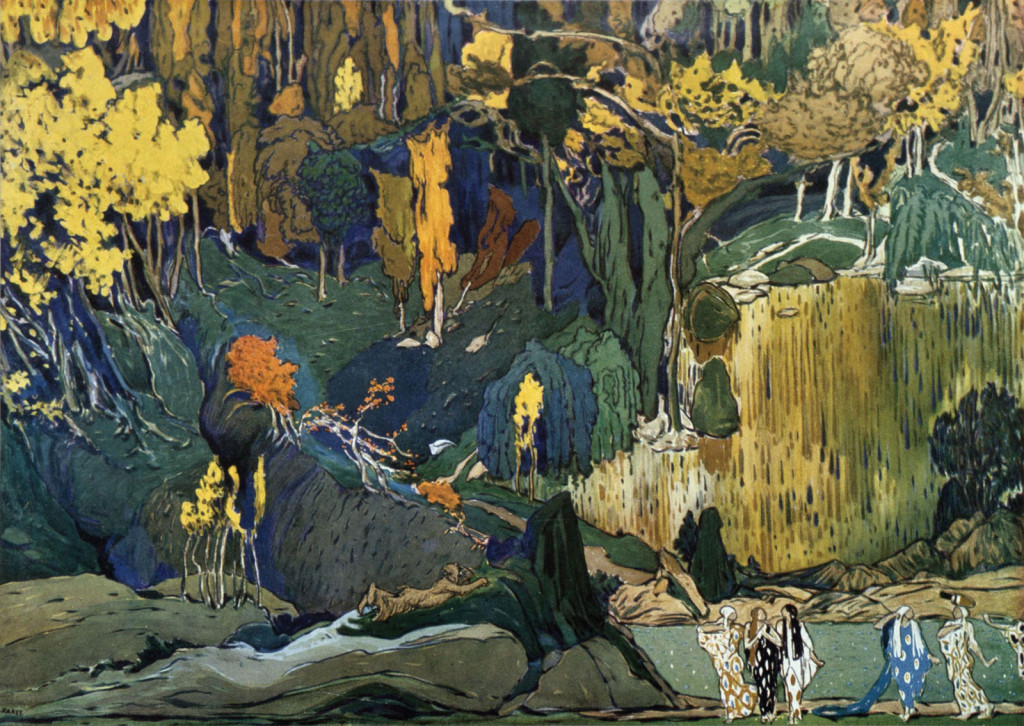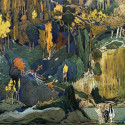The program notes for a recent concert called to mind the influence of other people on our personal views. We’re all influenced by others in some way. When we experience the values of others, their beliefs and attitudes mingle with our own; and over time a new vision is created even if we’re not fully aware of it. Whether it’s from people close to us or from others around the world, the wide range of beliefs and attitudes are powerful and add to the complexity of our lives. With the constant expansion of technology, the push and pull of disparate voices grows more and more every day. The influences affect us and change us in ways we couldn’t have predicted.
![Portrait of StéphaneMallarmé” by Édouard Manet [Public domain], via Wikimedia Commons Portrait of StéphaneMallarmé” by Édouard Manet [Public domain], via Wikimedia Commons](https://artsawareness.com/wp-content/uploads/2015/03/Portrait_of_Stéphane_Mallarmé_Manet.jpg)
The program notes were for Prélude à l’après-midi d’un faune (Prelude to the Afternoon of a Faun) by Claude Debussy. The influences are interesting not only in the relationships, beliefs, and attitudes of the late 1800s, but over time to the world today. The imaginative work by Debussy initially came out of his inclination for finding inspiration outside the realm of music. In this instance, the influence was Stéphane Mallarmé’s poem, Afternoon of a Faun. Mallarmé, a leading Symbolist poet of the time, chose his words as much for their sounds as for their meanings. Debussy shared the Symbolist’s interest in the use of a metaphorical language, allowing the art to speak in a suggestive manner using images and objects with symbolic meaning. In this metaphorical language, Debussy strived to stimulate a more sensorial experience for the audience and, in doing so, created a work truly original in form and compositional process.
An interesting example is a 2012 performance conceived by James Ross with movement design by Liz Lerman: Movement and Music: University of Maryland Symphony Orchestra’s Prelude to the Afternoon of a Faun. Another is this vintage performance of the London Symphony Orchestra conducted by Leopold Stokowski featuring the paintings and visual arts of William A. Bouguereau, Gustave Courbet, Otto Theodor Gustav, Jules Joseph Lefebvre, and Spadecaller.
I wish to sing of my interior visions with the naive candor of a child.
~ Claude Debussy
The influence and lineage further expands in a variety of artistic genres even today:
[sws_checklist]
- Mallarme’s friend, Edouard Manet, illustrated the poem.
- Lucien Levy-Durmer, a fellow Symbolist, painted Apres-midi d’un faune in the 1890s.
- Vaslav Nijinsky, a Russian ballet dancer and choreographer of Polish descent, choreographed Debussy’s work for the Ballets Russes in Paris.
- Debussy’s work was rearranged and recorded by jazz musician Eumir Deodato for his 1973 album Prelude, and it has been used in movies and by other musicians.
- Jerome Robbins set the ballet Afternoon of a Faun in a ballet studio using a three wall set.
[/sws_checklist]
The poetic act consists of suddenly seeing that an idea splits up into a number of equal motifs and of grouping them; they rhyme.
~ Stéphane Mallarmé

Consider your vision, beliefs, and attitudes. Split apart and group the patterns in your experiences that have determined your vision. Examine the influences on your life and work. Reflect on what you discover.
[sws_checklist]
- Does a particular belief or attitude influence your creativity?
- Does the power of these influences determine the resources you will use to create your way in the world?
- Were you aware of their influence and the changes over time?
[/sws_checklist]
It is in front of the paper that the artist creates himself.
~ Stéphane Mallarmé
In today’s world, we’re exposed to a wider sense of the world—its strengths as well as its weaknesses. The beliefs and attitudes we learned previously may not mesh with the reality of the larger society. Art is a reflection of the artist’s experiences. Explore what influences your views by reviewing and assessing your own personal experiences. Consider the influences and lineages of your vision for your life and work and whether they were influenced by someone else rather than direct knowledge or experience. The meaning we give to influences and events in our lives is important in inspiring creativity and resourcefulness. It provides awareness for our own personal art.
— Pat
Sign-up for the Arts Awareness eNewsletter and receive a free gift “Three Lessons to Begin to Make Artistic Principles Work for You in Fascinating Ways.” Like Arts Awareness on facebook.
